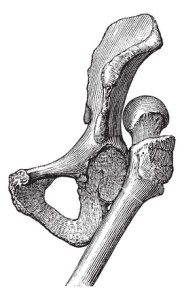#4: Hip Dysplasia, What Parents Can Do for their Children at Risk, Early Signs and Effective Treatments- Interview with Shriners Surgeon, Dr. Jon Davids
By: Meena Tadimeti
Contributor: specialneedsinmycity.org
@snimcity
Children with severe motor impairments experience hip problems causing pain or discomfort when walking, moving, sitting or standing. We asked Dr. Jon Davids, a well-known and highly respected pediatric orthopedic surgeon with Shriners Hospitals for Children in Sacramento to share his insights and expertise in treating children with hip abnormalities, current approaches used and what parents can do early on for their children at risk for hip dysplasia.
Following are a list of questions submitted by parents for Dr. Davids. The majority of the questions centered on the risk of their children having hip problems regardless of being able to walk or not but suffering from motor impairments.

Medically Related
- What are common hip conditions in children with special needs that are able to walk vs. not able to walk?
- What are children having difficulty as a result of hip deformity in the early stages? Early signs?
- What can be done in early stages vs. in an established dislocation?
- Is there a relationship between affected pelvis and onset scoliosis? Does one cause the other?
- How does it progress from discomfort(early stages) to actual dislocation (advanced stage)? What’s happening to the hip?
- What tests do you use to assess hip deformity?
Treatments:
- What is the current approach to treating hip diseases in children?
- What are the goals of treatment?
- If you can’t establish the source of pain despite a close evaluation, what treatments do you suggest?
- What are some surgical treatments offered or considered with kids experiencing progressive dislocation?
- When is a hip reconstruction considered? How long does it last without a follow-up?
 Parents’ Concerns:
Parents’ Concerns:
- What can parents do to prevent hip Dysplasia?
- What exercises can help strengthen the muscles that help provide the structure around the hips?
- Is the pelvic deformity and scoliosis more related to a child’s neurologic involvement or simply the condition of the hip to begin with?
- Since my kid can’t voice, where exactly is the pain coming from when he’s not able to position himself easily? Muscle, skin or bone?
- Is my child’s dislocation due to arthritis or hip pain?
- Can injections with or without therapy alter the disease?
- Are there any non-operative strategies to treating hip disease?
- Can surgery prevent dislocation before a particular age?
- Can spasticity be eliminated completely? In children with Cerebral Palsy?
- My child has CP and can walk. If there is no hip pain, is he still likely to have hip disease in the future? In other words, how can I tell if he’s in the early stages?
Show links: Visual Diagram of GMFCS (Gross Motor Function Classification System), click Here
If you’re a parent to a child with special needs, sign up to receive our monthly newsletter covering news, resources and events in your community. Also, receive tools, guides and templates to help you navigate special education by joining specialneedsinmycity’s FREE email newsletter.

